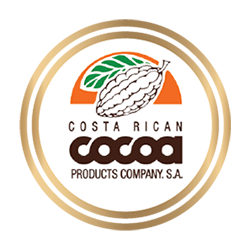HOW IS CHOCOLATE TASTED?
All 5 senses are filled with pleasure when tasting good chocolate. Find out what are the steps to follow to get the best out of this delicacy.
The ideal temperature for chocolate tasting is between 19º C and 25º C. We need to have palate cleansers available, water mainly or a wedge of apple or piece of bread, since this allows increasing the sensitivity between samples.
Tasting chocolate consists of letting the product settle in your mouth so that its aroma and flavor can be released.

CHOCOLATE TASTING SEQUENCE
1- Visual Phase
This phase is essential in order to evaluate the product´s quality. The following should be noticed:
• Color
• Surface
• If it is clear of defects
• Here, you will be able to observe if chocolate was overheated (cocoa butter on the surface) or went through long refrigeration periods (crystallized sugar)
2- Olfactory Phase
Take the bar and bring it close to your nose, directly inhaling the smells that come from it. You will find typical primary smells of cocoa and also secondary smells, such as milk, nuts and vanilla. Take the following items into account:
•Intensity and order of perception
• Smell identification
• Defects (chocolate easily absorbs the environment´s smells).
3- Tactile and Auditory Phases
This is a key phase in order to evaluate the product´s quality. The following should be noticed:
Touch should be perfectly combined with sound; it should not be sticky. When breaking the piece it should resonate with a crunchy, typical “SNAP!” This means that the cocoa butter has a good crystalline structure.
If the chocolate does not melt in your mouth and there are several morsels left, then it is not good quality chocolate since ingredients such as cocoa butter do not prevail in the mix.
4- Taste Phase
Once chocolate has been crushed in the mouth, we gently press it between the tongue and the palate so that it will quickly get warm and start to melt. We evaluate balance between flavors and aromas:
• Flavor: it must be essentially bitter; however, there are variations in intensity according to the percentage in the final product.
• Astringency: : it is a texture property.
• Aftertaste and persistence: it is the sensation that lingers after eating it.
There must be a good balance between sweetness, bitterness and sourness, thus generating a pleasant taste. Fine chocolates have a long lingering finish and may have aromas with different fruity notes, flower, balsamic, green tea, and nut notes, among others.

CHOCOLATE PAIRING
Wine and chocolate are natural mates and play a very important part within the world of gastronomy. It is common to hear that chocolate and wine do not get along well; however, it all depends on the type of wine and the type of chocolate being consumed.
First, you have to taste the wine by taking sips, then take a small chocolate bite and let it settle on your tongue. Once it starts melting, have another sip of wine and let them both merge in your mouth.
In both wine and chocolate tasting, flavors are released in stages.
Ideally, you should start with milk chocolate or cocoa bonbons with lower percentages and their corresponding wines - until you reach stronger flavors -so as not to saturate your palate with complex flavors.
Pairings for chocolate with more cocoa, bittersweet or semi sweet chocolate should be done with Zinfandel, Syrah, Armagnac or Cognac.
In the case of dark chocolate, Cabernet Sauvignon or Pinot Noir are preferable.

THE BEST DESTINATIONS FOR CHOCOLATE LOVERS
Its aroma and flavor are the perfect excuse for chocolate lovers. A dark pleasure we owe to the American continent and that has spread worldwide.
1- MEXICO
Mayan chocolate is one of the most coveted ones by purists. Many state that this was the birthplace of such a delicious product. Try it in Tabasco: old-fashioned style, thick beverage, seasoned with pepper.
Oaxaca is known as “the city of chocolate”; its streets are filled with the addictive aroma of cocoa and many direct production stores.

2- BELGIUM
Belgium has more chocolate stores by square meters than any other country in the globe and it has a variety of styles and proposals that will make you weep with pleasure.
There is a whole new generation of Chocolate Masters that will amaze you.

3- SWITZERLAND
This small alpine country feels visibly proud of its intimate relationship with chocolate. Its history dates back to 1875, when they first mixed it with milk and to 1879, when Rodolphe Lindt had the idea to melt it, thus gifting the world melted chocolate. Since then, the Swiss have glamorized chocolate, and that is the reason why many chocolate stores look like art galleries. Zürich and Geneva are the main cities where you can enjoy such delicacy.




